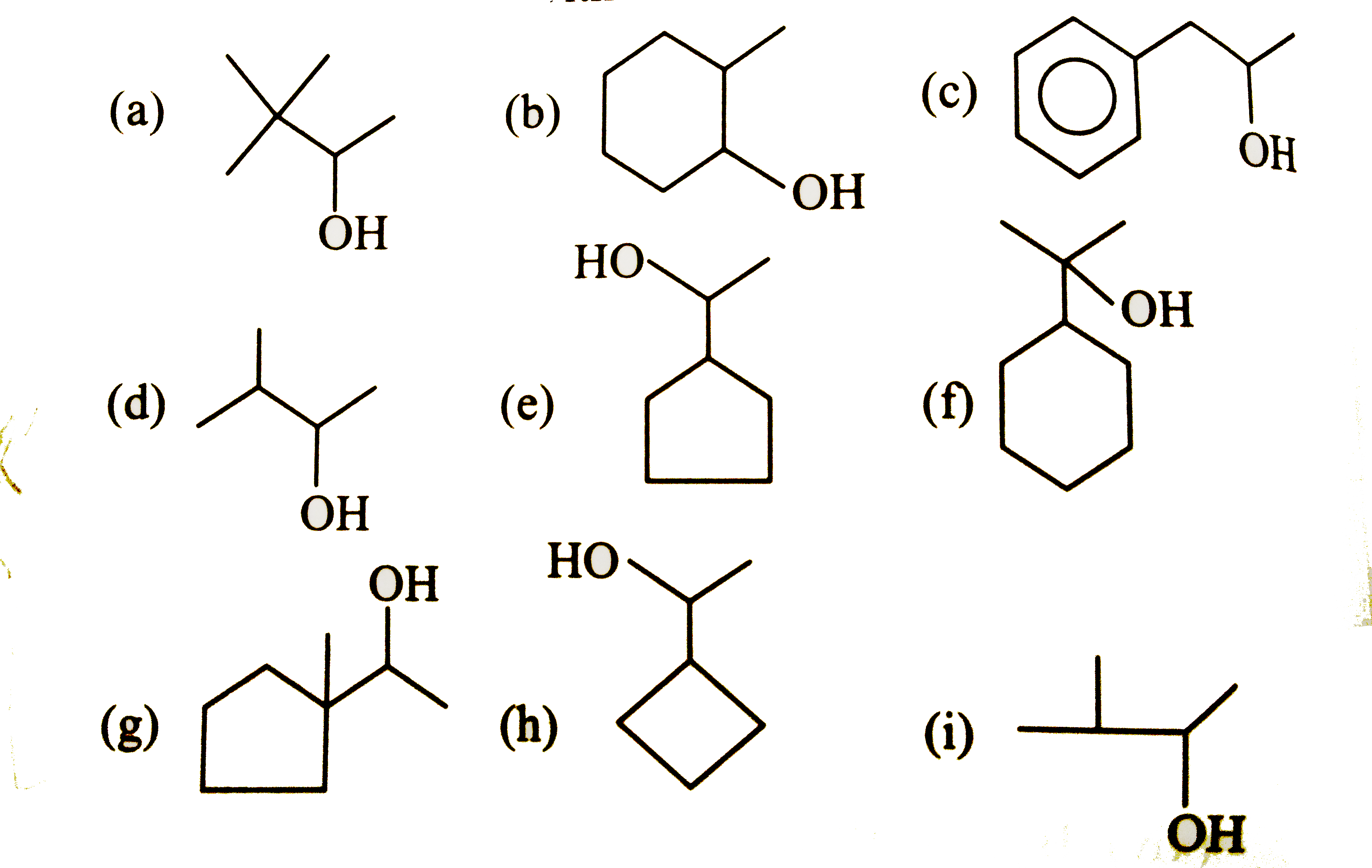The major product formed when alkyl iodides is treated with excess of ammonia
priamry amine
Secondary amine
Tertiary amine
quatermary ammonium salt
The correct Answer is:D
To determine the major product formed when alkyl iodides are treated with excess ammonia, we can follow these steps:
1. Identify the Reactants:
- We start with an alkyl iodide, which can be represented as R-I, where R is the alkyl group and I is iodine.
- We also have excess ammonia (NH₃) as the nucleophile.
2. Nucleophilic Attack:
- Ammonia (NH₃) has a lone pair of electrons on the nitrogen atom, making it a good nucleophile.
- The nitrogen atom will attack the carbon atom of the alkyl iodide (R-I). This results in the displacement of the iodine atom (I⁻) as a leaving group.
3. Formation of an Ammonium Ion:
- When the nucleophilic attack occurs, the nitrogen atom from ammonia forms a bond with the carbon atom, leading to the formation of an ammonium ion (R-NH₃⁺).
- This ammonium ion is unstable due to the positive charge on nitrogen.
4. Deprotonation:
- The ammonium ion (R-NH₃⁺) can lose a proton (H⁺) to stabilize itself, resulting in the formation of a primary amine (R-NH₂).
- The reaction can be summarized as follows:
R−I+NH₃→R−NH₃+→R−NH₂+H+
5. Final Product:
- The major product of this reaction is a primary amine (R-NH₂).
- Since we are using excess ammonia, the reaction does not proceed further to form secondary or tertiary amines or quaternary ammonium salts.
Conclusion:
The major product formed when alkyl iodides are treated with excess ammonia is a primary amine (R-NH₂).
- We start with an alkyl iodide, which can be represented as R-I, where R is the alkyl group and I is iodine.
- We also have excess ammonia (NH₃) as the nucleophile.
- Ammonia (NH₃) has a lone pair of electrons on the nitrogen atom, making it a good nucleophile.
- The nitrogen atom will attack the carbon atom of the alkyl iodide (R-I). This results in the displacement of the iodine atom (I⁻) as a leaving group.
- When the nucleophilic attack occurs, the nitrogen atom from ammonia forms a bond with the carbon atom, leading to the formation of an ammonium ion (R-NH₃⁺).
- This ammonium ion is unstable due to the positive charge on nitrogen.
- The ammonium ion (R-NH₃⁺) can lose a proton (H⁺) to stabilize itself, resulting in the formation of a primary amine (R-NH₂).
- The reaction can be summarized as follows:
R−I+NH₃→R−NH₃+→R−NH₂+H+
- The major product of this reaction is a primary amine (R-NH₂).
- Since we are using excess ammonia, the reaction does not proceed further to form secondary or tertiary amines or quaternary ammonium salts.
The major product formed when alkyl iodides are treated with excess ammonia is a primary amine (R-NH₂).
Topper's Solved these Questions
- BOOK - NARAYNACHAPTER - ORGANIC COMPOUNDS CONTAINING NITROGENEXERCISE - EXERCISE-1 C.W. (IUPAC NAMING)3videos
ORGANIC COMPOUNDS CONTAINING NITROGEN
- BOOK - NARAYNACHAPTER - ORGANIC COMPOUNDS CONTAINING NITROGENEXERCISE - EXERCISE-1 C.W. (CLASSIFICATION AND PREPRATION OF AMINE)12videos
ORGANIC COMPOUNDS CONTAINING NITROGEN
- BOOK - NARAYNACHAPTER - ORGANIC COMPOUNDS CONTAINING NITROGENEXERCISE - EVALUATE YOURSELF-35videos
ORGANIC COMPOUNDS CONTAINING NITROGEN
- BOOK - NARAYNACHAPTER - NUCLEAR CHEMISTRYEXERCISE - INTEGER28videos
NUCLEAR CHEMISTRY
- BOOK - NARAYNACHAPTER - PERIODIC TABLE EXERCISE - All Questions573videos
PERIODIC TABLE
Similar Questions
Knowledge Check
- Question 1 - Select One
The major product formed when alkyl iodides is treated with ammonia
Aprimary amineBsecondary amineCtertiary amineDquatermary ammonium salt - Question 2 - Select One
Isocyanide is formed as the major product of the reaction when alkyl halide is treated with one the following
AAgNO2BKNO2CAgCNDKCN - Question 3 - Select One
Ethyl iodide reacts with excess ammonia to give
AEthyl amineBDiethyl amineCTriethyl amineDTetraethyl ammonium iodide
The major product formed methyl iodide reacts with sodium nitrite is
View SolutionThe major product expected, when Phthalamide is treated with NaOH, is
View SolutionThe product(s) obtained when t-butyl bromide is treated with alcoholic ammonia is ________.
View SolutionWhat are the product obtained when ammonia is reacted with excess of bromine:
View SolutionThe major product formed when 1, 1, 1-trichloro-propane is treated with aqueous potassium hydroxide is:
View Solution


